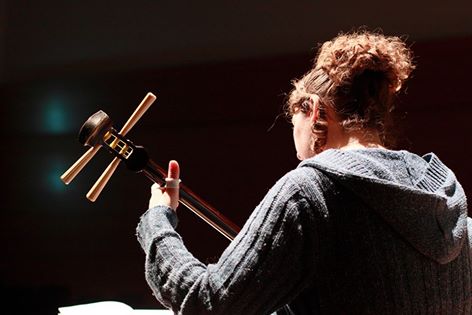This CD was a labor of love, but also came completely out of
my own pocket. Making a CD on your own at a professional level without the
backing of a label or record company is no small amount of money.
First you need to pay for all of the musicians and all of
the rehearsals they need to learn your music. They don’t just come in and sight
read. I guess in theory they could, but you wouldn’t then have the highest
level of recording as possibly. You also need to pay for them to hang out at
the recording location with you all day, for their instruments, transportation
of their instruments (especially in the case of percussion) and food and drinks
so they don’t run out of energy before recording is over. So, basically you
need to be paying for them for multiple full days of work at a full time pay. It
is a lot of pressure on everyone involved and even though professionals make it
look easy, it is anything but easy.
You need to reserve and pay for the recording location. For
this CD I recorded it in a live hall to get the most natural reverb as
possible. The particular hall I choose gave me a lot of control over how much
reverb there was so I could make sure the unique timber for the shamisen would
come through. Because Tetsuya Nozawa was playing all of the shamisen parts and
would have died if I had asked him to play all of the pieces at one time in one
day, I had to reserve the hall three times for three whole days to complete
this project.
You need to pay for the recorder engineers, their equipment
and mics. I was blessed with a
really amazing recording engineer who both taught and guided me while making
sure to let me lead. He brought in the best mics for this recording, set up and
tore down everything and checked for everything I never thought of checking
for. It was great! But everyday we recorded, I had to pay for them to come in
and take off the day to work. It is not cheap!
You need to pay for the mastering of each track. A lot of completing
a CD happens after the entire recording is over. This is both cleaning up the
sound, making sure each instrument is balanced, as well as putting the proper
timing between tracks. There is a difference between a professional doing this
and an amateur (like myself).
You need to pay for the design of the CD booklet. Let me
tell you, pay your designers. Not only do they know things that you would never
have thought of, but also they can create something you would have never
dreamed of. Simply said, my
designer Norei Yoshida did an amazing job!
You need to pay for each page in your CD jacket and
printing. The more pages you add, the more the entire project will cost. I
could have saved costs by only writing my liner notes in one language to cut
down on the page count, but because I thought both Japanese and English was
important, I wrote in both languages which added pages. Also just the raw
printing of the CD, of course, cost money.
The last payments go into distributing the physical CD
itself. Not just shipping costs but did you know you have to pay money for a bar-code? I didn’t know, and it is expensive! Right now I don’t have the money
for it so I am selling myself CD more straight out of my hand method over
Amazon.
Anyhow, I hope this explains the high costs of the CD. I
know not everyone can pay for it but if you can continue to support me through
your words and views that is more than enough! Soon I will put tracks on iTunes
as well so you can hear it all at a much cheaper price (without the liner notes
though =(
Thank you always for your support~ ^_^











